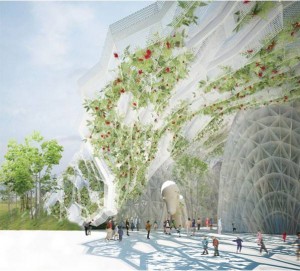- In a exclusive interview, John V.* Director of Facilities at the a renown art museum in Manhattan, New York provides the an in-depth look at the existing operating systems and outlook to the future of museum sustainability.
Prior to working for the museum, John worked in facilities management on university campuses and academic institutions for more than 30 years. Currently at the museum, the facility veteran’s responsibilities include day-to-day maintenance of mechanical systems, upkeep of climate controls, and leading capital projects for the museum’s long-term sustainability.
Museum Climate Control
According to John, the works of art housed at the museum are incredibly climate-sensitive. For an average commercial or residential, it is sufficient to have a single air handler, or filtration system, to produce clean breathable air. However the stringent conditions at the museum require the building to have two complete air handling units.
“Imagine mold spores building up on a Picasso or Matisse”, John says, “Particulates include pollen, dirt, dust, and mold and can come from anywhere, including from under your shoes”.
Additionally, keeping the filters clean is of high priority, both for the cleanliness of the air as well as for making sure machines are running optimally. Without frequent replacement of new filters, residue can cause blockades on the machinery, impacting both air quality as well as power to run the machines.
However arguably the most important environmental monitoring taking place in art museums is with temperature and humidity control. John says that the museum must always follow the “70/50 Rule”, which requires 70 degrees F and 50% relative humidity at all times. This is because unlike people who can tolerate mild temperature swings inside buildings through the months, John describes, works such as paintings are much more sensitive. For example, changes in humidity will cause the wooden panels of paintings to expand and contract, which can result in cracks and unrepairable damage on the works.
According to John, each museum visitor adds heat and moisture to the space, and thus needed to be factored into equation as well. For this reason, museums require floor-by-floor temperature monitoring to ensure that paintings in each gallery are maintained in optimal conditions at all times.
Technology in Museums: BMS
The 24/7 operations of the museum’s climate change significant energy, man-power, and controls. Since these conditions need to be consistently met, a certain amount of automation is required in addition to the eyes of the facilities team.
BMS, or building management systems, are responsible for this job and are software suites that monitor and control environmental conditions for commercial buildings and museums alike .
The center of this building is a tall, open atrium around which the museum’s galleries are built. Because of this single space, monitoring environmental conditions with temperature and humidity sensors is not only important, but a necessity in preserving the works and maintaining comfortable conditions for the museum visitors.
According to John, any system used by a museum of this scale needs to be “smart…nimble… and should be able to respond to change quickly”.

